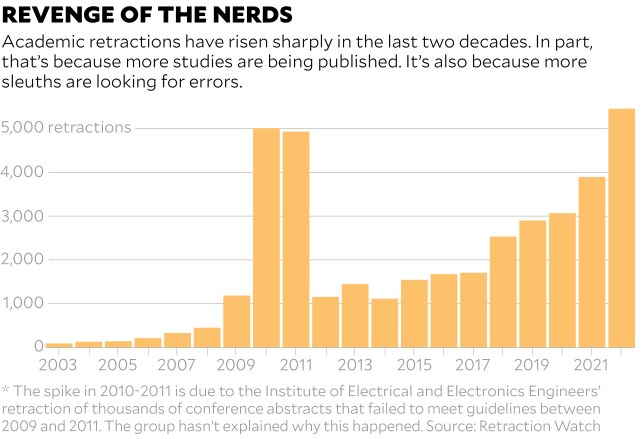Why Are So Many Science Journal Articles Being Retracted?
Science Research’s Bad Side – Science Journal Articles Being Retracted
By John L Elliott MS
Previously, I wrote about Adverse Events studies. Science journal article being retracted causes alarm. A bit of history first. The the oldest retraction is from 1756, a critique of Benjamin Franklin’s research on electricity. In science at most universities there is pressure to “publish or perish”. This trend dates back to the 1930s world wide. The problem is how much of academic prestige, career advancement, funding, all of those things are wrapped up in publications, particularly in certain journals. For biology and medical researchers the Journal Nature is the goal. My first papers with David Martin were published in Runner’s World. Runner’s world now has fluff articles. Back then it had data driven articles on exercise physiology and training.
Collecting medical data is now a drag in research because of HIPAA laws on personal medical information. Working in hospitals or with medical information in my past. Consequently, workers take refresher courses on HIPPA rules.
So greed leads to poor data collection and processing. You then have to write in an APA format. This leads to excessively long and boring journal articles. This means it takes time for reviewers to analyze papers. So papers maybe out for years with false data and false conclusions.
This is the number of papers across all areas of science Retracted since 2003.
More on science journal article being retracted a research graph

science journal article being retracted since 2003
We don’t know why there is a spike in 2009-2011. My guess is the cause was economic at universities due to the 2007-2010 recession and project funding. Also the Institute of Electrical and Electronic Engineers retracted many articles that did not meet guidelines. The same maybe happening from 2018-2022 as many journals are now going back review articles with more reviewers.
The importance of checking references in research
So use care when starting a research project. Research groups are now checking all the references used. Thus for researchers, time spent reading the retracted journal article lists proved critical.
The famous retracted article used by anti vaccines
A famous case was the basis of the vaccine-autism myth. A chilling example of poor science. This journal article has caused many problems due to the poor science in it. The infamous article published in the prestigious medical journal, The Lancet, in which Andrew Wakefield, a former British doctor, falsely linked the MMR (measles, mumps and rubella) vaccine to autism. The co-authors and the journal retracted the article. As a result, Wakefield lost his medical licensed for his deceit. The study only had 12 subjects. Afterwards, research has found different causes of Autism. What this did do was increase studies into the possible causes of Autism. Studies like this one are giving insights into autism.
The maternal body causes autism
Summary
So in summary, what can we take away from this? The lessons are as follows 1. We need more data studies on vaccine failures, 2. we need to develop better testing for vaccine risk factors for failure, 3. we need better education on the immune system at all levels of education so people are more aware of correct sources of information, and lastly we need to continue immunological research and development.
A good place to start this research are vaccine failure studies by Darrell O. Ricke PhD using the VARES database of the CDC. CDC Vaccine database